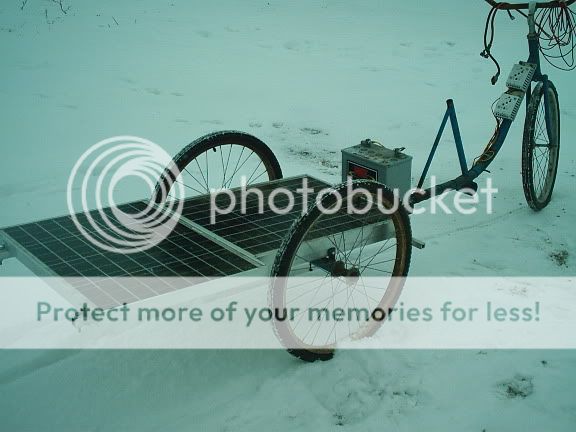Minnesolar
New Member
I'm building a solar-electric trike on the frame of a stretched adult trike.
It has three 12-volt batteries wired in series. There's a 36-V hub motor on the front wheel. Another important fact: I'm not good at wiring.
The trike has two 12-volt, 40-watt solar panels and a charge controller for each, that are wired together but still need to be wired to the batteries.
How would you go about wiring the two solar panels to the three batteries?
Would some sort of diodes be needed to prevent backflow or shorting of the electric current?
Thanks!
It has three 12-volt batteries wired in series. There's a 36-V hub motor on the front wheel. Another important fact: I'm not good at wiring.
The trike has two 12-volt, 40-watt solar panels and a charge controller for each, that are wired together but still need to be wired to the batteries.
How would you go about wiring the two solar panels to the three batteries?
Would some sort of diodes be needed to prevent backflow or shorting of the electric current?
Thanks!


